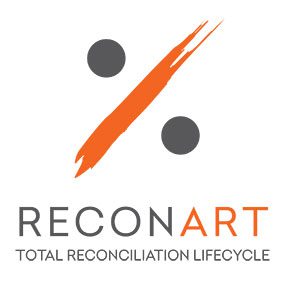
Reconciliations dominate the accounting function in some organizations due to the scale of operations or industry-specific factors. Finance clerks struggle with the limitations of existing systems or turn to spreadsheets for assistance. They are the first to acknowledge the need for a change. There are unmistakable tipping points when the struggle with the limitations of the makeshift spreadsheet tools becomes more than a minor inconvenience. Here is a selection of telling signs that the time for automated reconciliations is high.
High and rising transaction volumes
The growing volume of transactions to be reconciled monthly becomes the first red flag that manual reconciliation should stay in the past. Typically, the first to suffer are high transaction businesses, including the following:
- eCommerce & retail
- Cross-border remittance & payments
- Consumer services
- Firms with subscription-based business models
- Travel & Tourism
They also witness seasonality peaks in transactions to be reconciled and require flexibility in addressing the fluctuations.
Transaction volumes starting at tens of thousands monthly pose serious challenges for anyone to close the accounts on time, however creative spreadsheet formula wizards one can be. The huge number of records to be checked require extended (usually human resource) capacity to handle. In such instances, mundane but urgent tasks crowd out value-added accounting duties.
The most apparent benefit of automated bank reconciliation is the enormous productivity gains specifically related to individual transaction matching. Software executable rules for tying thousands, even millions of records together do the job in a fraction of the time and without annoying manual errors. The automation of transaction matching provides a compelling example of machine processing power that complements and amplifies human analytical skills.
Complex matching logic
Matching complexities emerge in various situations. One stem from multistep comparisons involving more than two data sources. A familiar scenario in credit card reconciliation for hospitality and recreation clients collates general ledger, payment processors or bank statements, and order management platform records. Work is doubled and hides pitfalls that need attention immediately to keep up the high-speed turnover of order-to-cash.
Another common complication in account reconciliations is the relationships between the compared items in the data sets. Matching one-to-one is relatively straightforward. However, reconcilers often deal with cases where one or several records on side A offset many line items on side B. The group may or may not possess a common identifier and must be crosschecked using several criteria. Bulk sums in bank statements that need to be unbundled ranks as one of the top cited challenges resolved by reconciliation software.
Numerous data feeds participating in the reconciliations
Companies that collaborate and transact with multifarious counterparties, such as suppliers, partners, banks, government institutions, corporate customers, etc., report another intrinsic problem with manual reconciliations. Managing a network of counterparties and dozens of data feeds is a full-time job squeezed in with the rest of the workload. Data streams come in all shapes and sizes and must undergo transformation and enrichment prior to matching.
Finance teams also face time-consuming and labour-intensive chores before manual reconciliations. These tasks may include downloading email attachments, converting files into a compatible format, and printing to extract transaction detail to populate an excel table. Bringing clean, enriched data into the matching tool is challenging for many. Automated import, ETL capabilities, and the support of multiple formats are, therefore, high priority requirements for any solution.
Dealing with heaps of discrepancies in the reconciled accounts
Inefficient exceptions management is another reason to embrace automation. The number and variety of unmatched records to be sorted out defies the accountants’ confidence to close the books at period end.
The investigation of outstanding invoices and tracking the aging of transactions is essential for cash management. For some accounting departments, the transaction lifecycle is protracted, and open invoices can expect repayments over months before the eventual settlement. Others deal with dozens of line items that require proper booking into the correct account and control over the journal entry creation.
Investments administration and management firms also put a strong focus on discrepancies identification and treatment in their daily positions reconciliation. Financial regulations mandate careful and exhaustive investigation of the so-called breaks. Reconcilers in these firms go to great lengths to spot, document, and resolve matching inconsistencies within tight deadlines or risk compliance breaches that could cost the company’s license. Manual monitoring, exceptions classification and follow-up, however, prolongs the turnaround time, and automated reconciliations can remedy that.
Compliance and regulatory requirements
Internal and external compliance can be a headache for F&A professionals. Banking, financial services, and investment management businesses are typically subjected to stringent scrutiny and pressure to align with the shifting regulatory standards. Besides the grapple with internal reporting requests and period-end last-minute calls, statutory regulatory submissions and audits add additional stress. Unstructured reconciliation processes sticking to pen and paper and/or email attachments do not help much.
Manual reconciliations tend to perpetuate several persistent shortcomings. Team coordination may falter with thousands of accounts eligible for review, substantiation, and certification by multi-level approval chains. The audit trail is fractured and captured erratically. Without transparency and a single point of reference, the team finds it hard to challenge audit findings.
On the other hand, streamlined and standardized period-end activities within a digital environment help establish best practice financial close processes. Reconciliation and financial close software bring structure, predictability, and clarity into the process for all participants and supervisors. Technology makes a difference with:
- user access controls and effective separation of roles
- streamlined workflows and task distribution
- proper documentation and record keeping
- granular audit trail
- scheduled reporting
Recurring losses and costs reduction needed
Reconciliation of receivables has a direct impact on the bottom line. ReconArt has customer use cases of credit card and e-payments reconciliation for merchants where the automation of the transaction matching has improved the revenue collection dramatically. Manual reconciliations provided little time to dive into the transaction details and limited visibility on the root cause of the unmatched items. As a result, the client reconciliation teams used to make difficult choices and write off sizable amounts as uncollectable at period end.
A closer look into high-volume vendor reconciliation shows that straightforward settlement of invoices is rarely the case. Correction of overcharges, duplicate entries, unclaimed commercial discounts, foreign exchange differences, or other errors tends to be the norm. Given the scale of procurement activities some companies administrate, such small individual oversights sometimes add up to figures causing genuine concern.
The outdated semi-manual method for matching account balances manually has little time to examine the individual transactions behind them, which can obscure significant and untraceable shortfalls. However, recurring losses cannot be swept under the rug for long. The reconciliation tools save time in analysing accounts and shore up operational gaps.
The automated reconciliation software is within reach
Enterprise-class reconciliation solutions have been on the market for well over a decade. They can successfully address each of the challenges above. Ever-growing transaction volumes, business complexities, compliance requirements, and cost optimization commitments call for increased capacity to manage critical account reconciliations. The right timing of technology adoption can spare the recon teams lingering with outmoded operations and perpetuating long overdue problems.

ReconArt integrates all transactional matching, account reconciliation, and financial close management processes in a secure and auditable environment with a strong focus on best practices, regulatory standards, and compliance mechanisms. The ReconArt SaaS solution ushers in dramatic efficiencies into clients’ existing manual processes generating time savings and reinforcing precision.

























